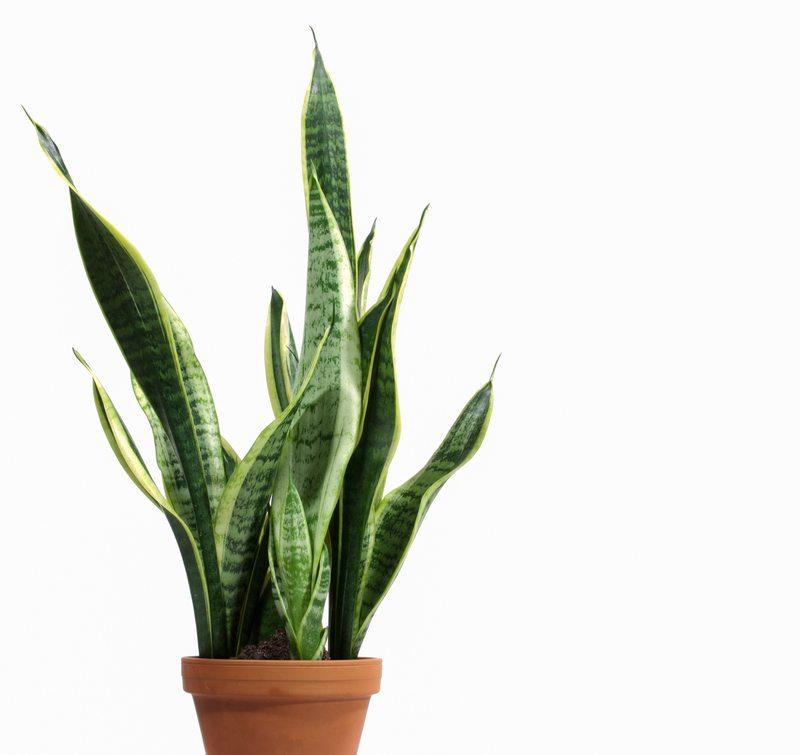Greening the Sky: Vertical Gardening Techniques
Posted on 01/06/2025
Greening the Sky: Vertical Gardening Techniques
In our rapidly urbanizing world, landscape spaces are shrinking while the desire to connect with nature grows. Enter vertical gardening--a transformative greening solution that's taking spaces from bland to thriving. Greening the sky isn't just poetic--it's practical, beautiful, and increasingly necessary. Whether you have a spacious backyard or only a tiny balcony, these vertical gardening techniques will help you bring Mother Nature upward, reclaiming sky for green growth.
What is Vertical Gardening?
Vertical gardening is the method of growing plants on a vertically suspended panel or structure, using soil, hydroponic or aeroponic systems. Unlike traditional gardens that expand horizontally, vertical gardens maximize limited space by using height rather than width. This technique is gaining worldwide acclaim for turning walls, fences, balconies, and even indoor spaces into lush oases.

Benefits of Vertical Gardening
- Efficient use of space: Perfect for urban dwellers with limited ground area.
- Improved air quality: Plants filter pollutants and increase oxygen.
- Thermal insulation: Green walls act as natural insulators for buildings.
- Aesthetic appeal: Dramatic, living features enrich any environment.
- Well-being: Proximity to greenery offers psychological and health benefits.
Environmental Impact and Urban Improvement
Vertical greening can lower city temperatures, reduce carbon footprints, and mitigate urban heat islands. By greening the sky, cities become healthier and more livable.
Popular Vertical Gardening Techniques
There are various vertical gardening methods suitable for different spaces, skill levels, and budgets. Here are the most effective and innovative approaches:
1. Living Wall Systems (Green Walls)
Also known as vertical green walls or plant walls, these are self-supporting structures with integrated irrigation and rooting media. Commercial or DIY panels can be attached to exterior or interior walls.
- Hydroponic green walls: Use mineral solutions instead of soil for cleaner and lighter installations.
- Modular panel systems: Prefabricated cells or trays that hold soil and plants, easy for replacement and rearrangement.
- Felt pocket systems: Layers of felt create pockets for plants, providing excellent root aeration.
2. Trellises and Vertical Frames
A timeless form of vertical gardening, trellises, and vertical frames are ideal for climbing plants like beans, peas, jasmine, or clematis. Attach these to walls, fences, or as free-standing supports in gardens and containers.
3. Hanging Gardens and Planters
Utilize hanging pots, baskets, and planters suspended from ceilings, balconies, beams, or custom supports. Compact and movable, these systems let you experiment with flowers, herbs, strawberries, and even small fruiting plants.
4. Pallet Gardens
Repurposed wooden pallets form pocketed, upright planters. Line the back and bottoms with landscape fabric, fill with soil, and insert your favorite annuals or succulents. Pallet gardens are budget-friendly and ideal for patios or balconies.
5. Gutter Gardens
Mount old rain gutters horizontally on a fence or wall, fill with lightweight soil, and grow lettuce, spinach, small flowers, or herbs. Gutter gardens are clever solutions for narrow, sunny spaces and are easy to water and maintain.
6. Tower Gardens and Stacked Planters
These vertical columns use a cylindrical design, often with a central support pipe providing nutrients or water. Stacked planters are well-suited to patios or small yards, and can dramatically increase your growing area.
Choosing Plants for Vertical Gardens
Plant selection is crucial for the success of vertical gardening. Your choices depend on light, climate, and available space. Consider these categories:
- Climbing and vining plants: Ivy, passionflower, morning glory, sweet peas, wisteria, and climbing roses.
- Flowering annuals and perennials: Petunias, lobelia, nasturtiums, pansies, violas.
- Edible plants: Strawberries, lettuce, chard, arugula, kale, and compact tomatoes.
- Herbs: Basil, thyme, oregano, parsley, mint, and cilantro.
- Succulents and air plants: Apt for dry, sun-exposed vertical gardens with less frequent watering.
Best Plants for Indoor Vertical Gardens
- Ferns: Such as Boston fern or maidenhair fern.
- Philodendron and Pothos: Tolerate low light and are easy to maintain.
- Spider plants or peace lilies: Great air-purifiers for living and working spaces.
- Orchids or Bromeliads: Exotic appearance with minimal soil needs.
Step-by-Step: Building a Vertical Garden
Ready to start greening the sky in your own home or yard? Here's a DIY guide to launching your own vertical garden:
1. Plan Your Site
- Assess Sunlight: Morning sun, partial shade, or full sun will dictate plant selection.
- Water Access: Install near a water source if possible; consider built-in irrigation for large projects.
- Support Structures: Make sure the wall or frame can bear the weight of your installation.
2. Choose a System
Decide between living wall panels, vertical planters, trellises, or a combination. Purchase a ready-made system or build your own using affordable materials like pallets, gutters, or recycled bottles.
3. Install Backing and Frame
- Waterproofing: Protect your walls with a waterproof membrane or sealant.
- Mount the Frame: Use nails, screws, or heavy-duty brackets for security and safety.
4. Plant and Arrange
- Soil Choices: Use high-quality, well-draining lightweight soil or hydroponic media.
- Plant Density: Place trailing plants near the top, bushier varieties in the middle, and trailing or slow-growing plants below.
- Spacing: Leave adequate space for root expansion and airflow.
5. Irrigation and Maintenance
- Irrigation: Automated drip lines or self-watering reservoirs maintain even moisture. For manual setups, regular watering is essential.
- Feeding: Apply liquid or slow-release fertilizers tailored to your plant selection.
- Pruning: Trim spent flowers and leaves to keep the display neat and encourage new growth.
Innovative Ideas for Vertical Gardens
Edible Walls
Combine sustainability with practicality by growing strawberries, peas, lettuce, and herbs on a vertical wall. Some restaurants and cafes are now creating edible facades, picking fresh greens right from the wall for daily menus!
Eco-Friendly Privacy Screens
Replace fences or partitions with dense, green living walls made of vines, bamboo, or tall grasses. These natural privacy screens buffer noise and create a relaxing, green escape.
Artistic Plant Murals
With careful design, a living wall can become a piece of living art. Plant mosaics in varying shades of green, or highlight wall sections with bright blooms to form intricate designs and patterns.
Vertical Hydroponics and Future Farming
Urban farmers use vertical hydroponic towers to grow fresh produce all year long, right in the city core. These systems can even be deployed indoors with artificial lighting, contributing to urban food security and reducing food miles.
Common Challenges and How to Overcome Them
- Drainage Issues: Install proper drainage to avoid root rot and wall damage.
- Pest Management: Monitor for common garden pests and treat accordingly, preferably with organic solutions.
- Weight Concerns: Use lightweight growing media and strong support structures for safety.
- Sunlight Access: Supplement with grow lights for indoor or shaded installations.
- Watering Consistency: Automated irrigation systems can prevent over- or under-watering, which are frequent vertical garden issues.
Case Studies: Greening the Sky in Action
1. The Bosco Verticale, Milan
Among the world's most famous greening the sky projects, Milan's Bosco Verticale towers host over 900 trees and 20,000 plants across high-rise residential buildings. This urban forest absorbs 30 tons of CO2 annually, produces oxygen, and houses local wildlife.
2. Singapore's "Gardens by the Bay"
Singapore's Supertrees at Gardens by the Bay combine horticulture, art, and environmental engineering in vertical gardens that rise up to 50 meters, featuring sustainable lighting, rainwater harvesting, and over 162,900 plants from 200 species!
3. Indoor Living Walls in Offices
Modern workplaces embrace living walls for decoration and improved indoor air quality. Studies show employees enjoy increased productivity and well-being surrounded by these vertical green elements.
Vertical Gardening Tips for Small Spaces
- Use mirrors: Reflect greenery for a denser, brighter feel.
- Opt for pocket planters: They're lightweight and modular for easy adjustments.
- Mix plant sizes: Layering taller and trailing plants creates visual interest and maximizes sun exposure.
- Start with herbs: Culinary herbs adapt well to small, vertical planters.
- Prioritize accessibility: Keep edible and frequently-used plants within easy reach.

Future Trends in Vertical Gardening
As cities continue to densify, the importance of vertical gardening will only grow. Novelty materials, integrated smart irrigation systems, solar power, and modular, upscaled designs are pushing the boundaries. Soon, urban buildings might routinely feature green facades and rooftop farms--helping to green the sky everywhere people live and work.
Conclusion: Your Gateway to Vertical Greening
Vertical gardening isn't just a passing trend--it's a revolutionary way to cultivate beauty, health, and sustainability in the heart of our concrete jungles. Greening the sky, with living walls, stacked planters, hanging gardens, and hydroponic towers, gives us a chance to rewild our personal spaces and contribute to a better world.
Start small if you must, but start today. Whether you transform a tiny balcony or a feature wall, every new plant is a step toward a greener, fresher, and more vibrant urban skyline. Happy gardening!

